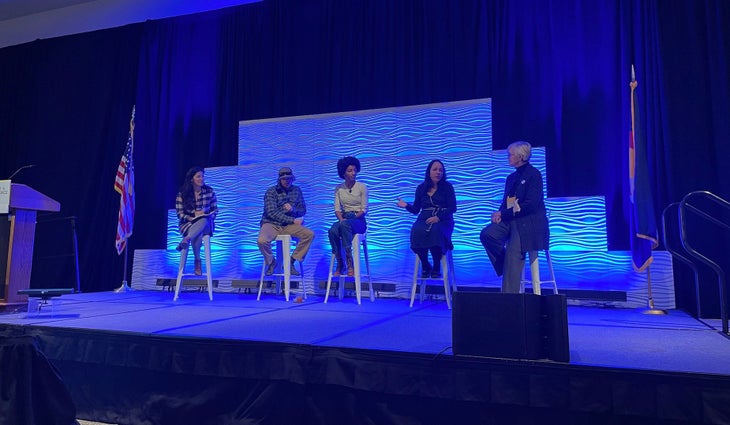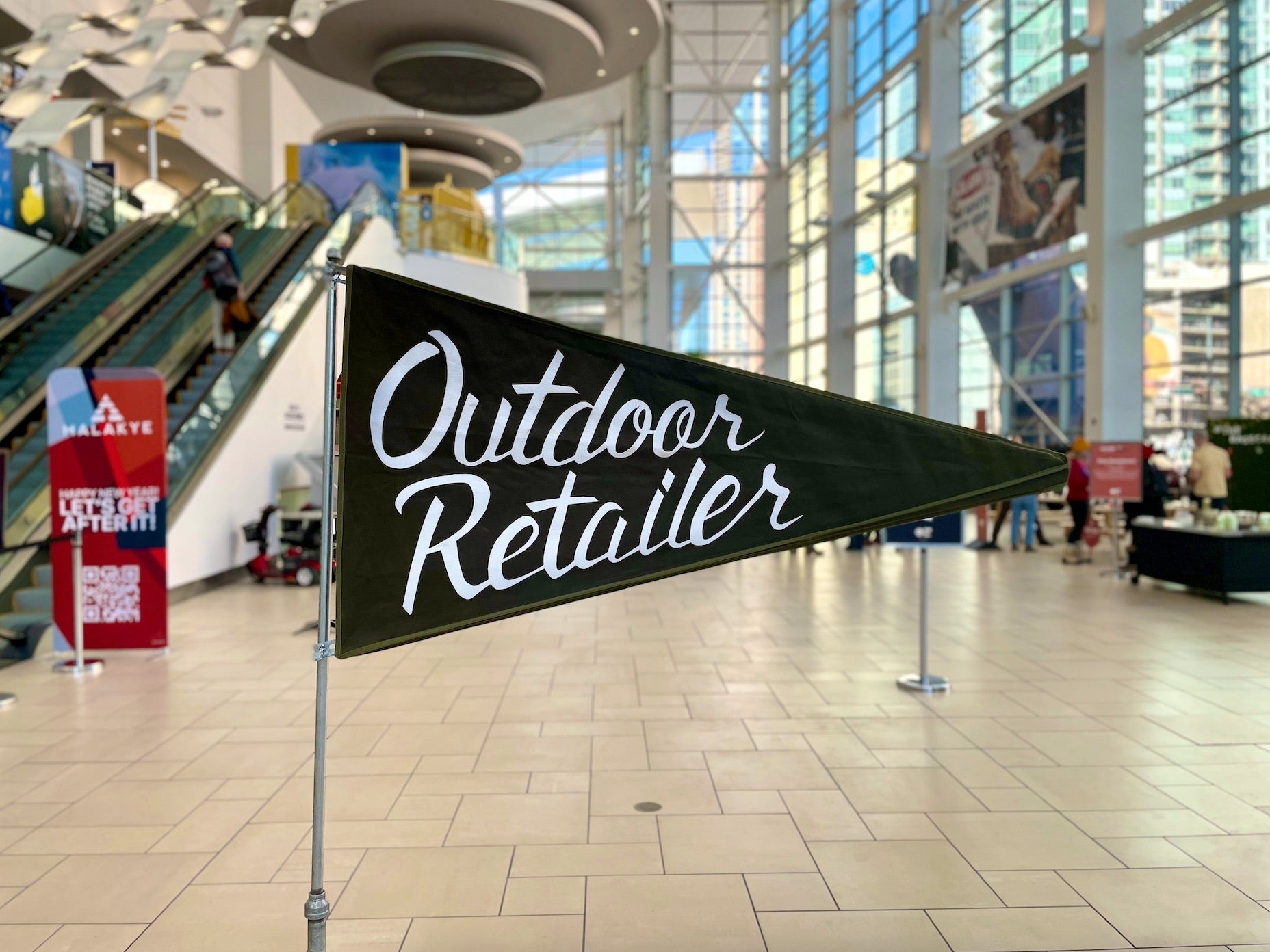The Outdoor Retailer Snow Show 2022 returned to the Colorado Convention Center today on an appropriately wintery morning. The general vibe? Subdued. And as the morning unfolded, cautiously hopeful.
Thanks to the recent surge in COVID, attendees were expecting a scaled-down event from the get-go, but the exhibitor hall seemed perhaps even more cavernous than usual. Entrance signage displaying the show’s daily schedule was dotted with “Canceled” bulletins where events should have been. And the early-morning welcome vibe was quiet, as if the industry wasn’t quite sure what to make of a gathering that should have been buzzing and exuberant, but instead exuded an almost solemn air. You could say the experience was reminiscent of OR’s reduced-attendance Summer Show coming off of the COVID hiatus. Except somehow, that slow feeling was more pronounced—perhaps a byproduct of the fact that the industry (well, the world, really) hoped we’d be past the masking and distancing by this point.
Noticeably missing were the behemoth brands—Black Diamond, Patagonia, Keen, and many others. But as many exhibitors shared with us, that’s actually a better scenario for the smaller brands and startups with a mission to network, make connections, and put their names out into the world. (Hear what some attendees have to say below.)
Debuting this year on the floor are the “Fresh” zone for new exhibitors and brands, designed as an area for buyer discovery, and the “Resource Center,” a hub where attendees can book one-on-one meetings with industry experts. But maybe the biggest new feature of the show this time around is the sense that Outdoor Retailer is changing, morphing into a gathering less about product and orders, and more about redefining our understanding of the outdoors and who shapes it.
With all this in mind, our reporters roamed the (spacious) aisles with notebooks in hand to bring you our roundup of the Snow Show’s first day.
Cool New Products
Scarpa’s first alpine ski boot: Scarpa is introducing its first bonafide alpine boot, the Quattro ($699-799). “These are true alpine boots but they have a walk-tour mode, tech fittings, and a GripWalk sole,” said Dave Simpson of Verde PR, who handles public relations for Scarpa. “As the backcountry and alpine categories converge, people are looking for gear that does it all.” The Quattro is the lightest boot on the market with a GripWalk sole (1500 grams for size 27) and is a collaboration between the Scarpa R+D team and its athletes, including Chris Davenport.
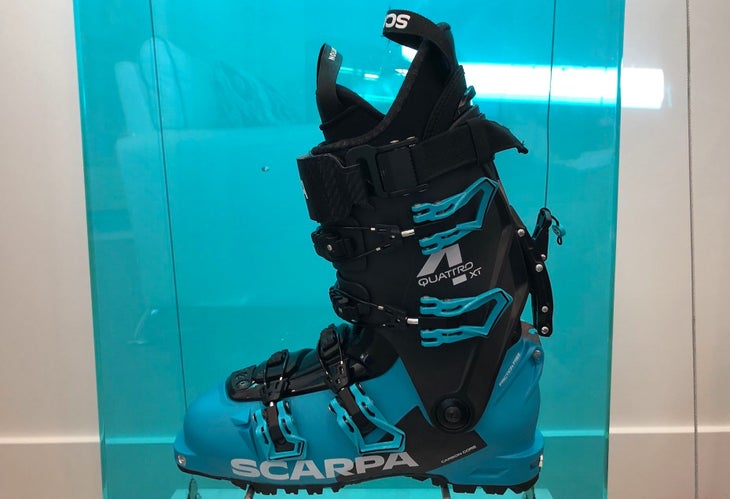
Scarpa was not exhibiting at Outdoor Retailer but created an offsite showroom a few blocks away to support the launch of the product line. “We still think trade events are vitally important to the industry,” said Scarpa North America CEO Kim Miller. “But my first priority was to keep my team as healthy as possible. We don’t have a deep bench; when one key person gets sick we lose functionality. The main reason we chose to participate on the periphery of the show was the Scarpa Athlete Mentorship Initiative graduation ceremony. It was supposed to be a big event with hundreds of people. Instead, we cut all the guests and are keeping it to just the team, as well as requiring same-day COVID tests.”
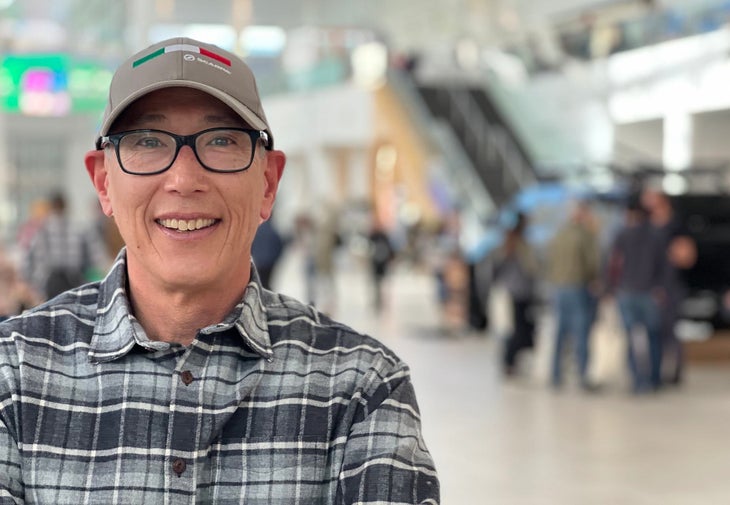
Heated camp chairs: Women-founded brand Gobi Heat used the show to debut its new Terrain Heated Camping Chair ($199), a cozy car-camping upgrade that does exactly what it sounds like. “We launched the chair in April, and already it’s our top-selling product,” said Gobi Heat CMO Kyle Jacobson. The chair’s battery lasts nine hours on a single charge and features three heat settings.
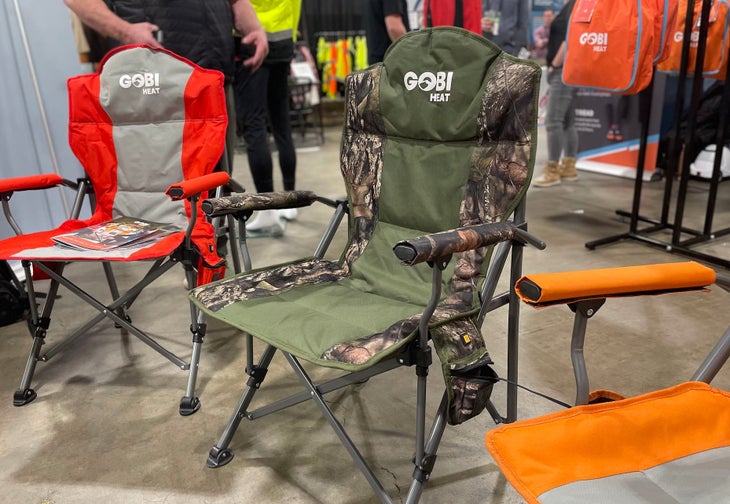
A green alternative to WD-40: For bike chains, stubborn gears, stuck zippers, rusty tent poles, and anything else in your toy shed that’s squeaky or snags or sticks: this plant-based, nontoxic alternative to WD-40, which has been on the market for two months, restores parts to better working order. Call it the duct tape of lubricants: it fixes everything, said co-founders Sergio Diaz and Andrew Aussie. In fact, they said, it can create twice the lubrication of WD-40 (yes, we watched a demo) with none of the noxious petroleum odor and mess. “Here’s the irony,” Aussie said. “You walk in a gear shop and everyone’s concerned about upcycled fibers in their clothing (and I love it), but every piece of [hardgoods] gear, from the canoe to the bike, it all needs lubrication. And you walk over to the lubrication, and it’s all made with petroleum.” Gear Hugger is safe for children and pets, and retails for $12.89 per 11 oz. can.
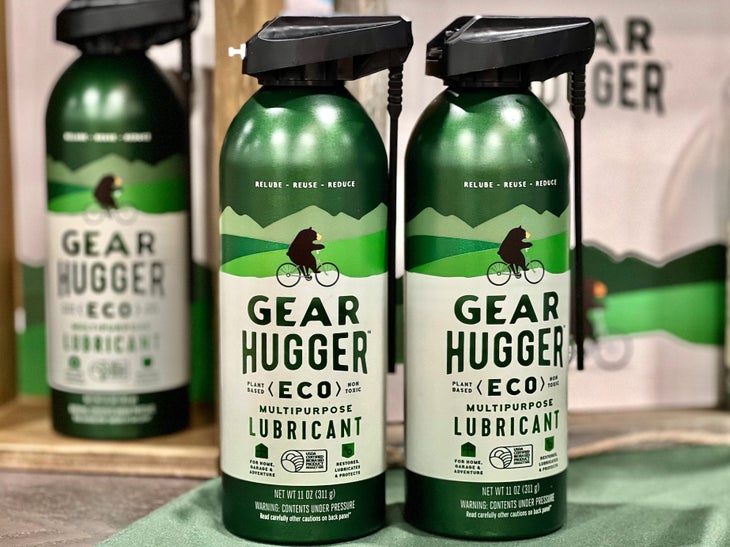
Notable New Brands
Sunglasses made from ocean plastic: Opolis debuted at OR Snow Show with a preview of its new line of shades, the Recycled Ocean Plastic Collection, launching next month. This line follows its Bio Collection, featuring plant-based plastic frames ($175). Opolis’ mission is to give back to global communities most impacted by the plastic pandemic by teaching locals to commoditize plastic for collection and a new life. The company, three years in the making, works with networks in Indonesia, Kenya, and the Philippines to collect ocean- and landfill-plastic to be upcycled into its eyewear, creating sustainable local work and a sleek shade to boot. “The first batch of production, we put in for 2,400 units; that is taking 300,000 water bottles out of the Balinese coast,” said Opolis founder and CEO James Merrill. “That’s just for a tiny order. Imagine what we could do with 50,000 units. This is the way that I want to impact change on my own terms.”
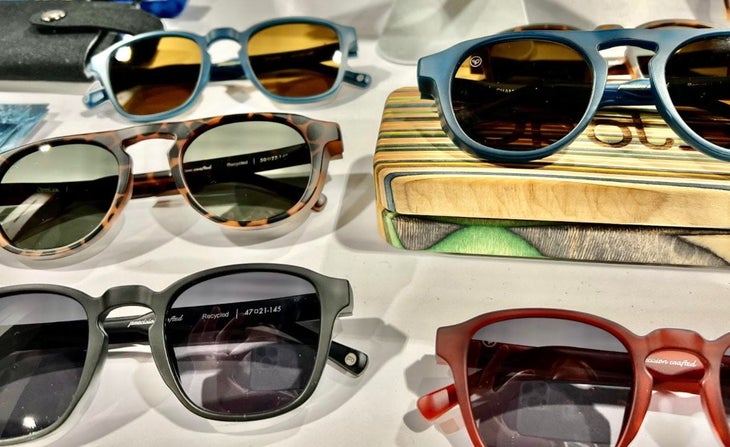
The yaks have arrived: Happy Yak Socks made its OR debut in the Fresh section. Inspired by his wanderings and curiosity about how mountain people stay warm at altitude, co-founder Zach Price learned that yak wool is 40 percent warmer than merino. ”It’s hollow fiber, like polar bear fur,” he said. “Happy Yak uses hand-gathered yak cashmere to make its collection of socks, beanies, and apparel.” The Purist line is the softest (80 percent yak cashmere with 20 percent nylon for durability) and the most expensive. A pair of socks goes for $55 at retail. The Adventurist line is a blend of 40 percent yak cashmere, 40 percent Mongolian wool, 14 percent nylon, and 6 percent elastic; it’s more durable and less expensive at $40.
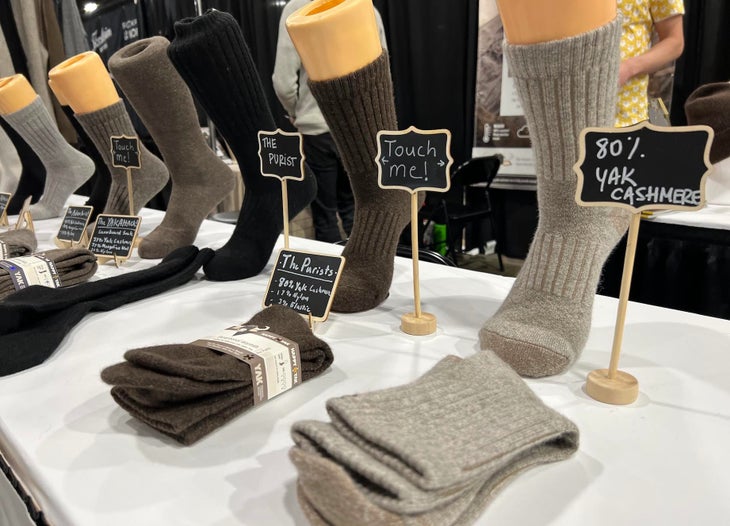
Radical supply-chain transparency: Solid State made its OR debut with a booth in Venture Out showcasing its “meticulously made, radically transparent” T-shirts ($55-70), which keep all aspects of the supply chain within 600 miles of the brand’s headquarters in Burlington, North Carolina. “We’re showing that you can make great clothing that’s truly local,” said brand manager Courtney Lockemer. “We’re trying to push local sustainability further than it’s ever gone.” Each shirt tag is stamped with a QR code that introduces customers to the farmers and manufacturers who made the garment. Even the shirts’ dyes are made from sustainable materials, like hand-harvested back walnuts boiled in a tank at a local brewery to produce brown coloring.
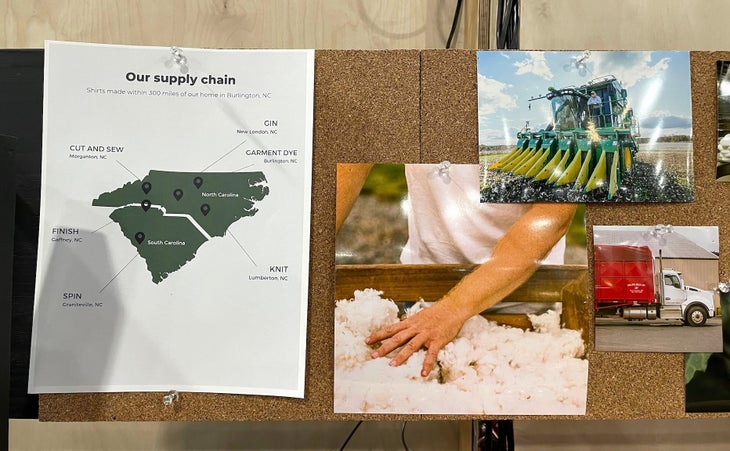
Hot Takes from the Show Floor
OR should consider opening up to consumers: “It would give more value to some of the smaller brands if you’ve got a combination of buyers and consumers,” says Natalie Ooi, teaching associate professor and one of the lead faculty of the Outdoor Recreation Economy Program at the University of Colorado Boulder. “[Maybe] you have a special buyers’ day only, like the first day where it could be really business-focused, but subsequent days you could open it up a bit more. Even inviting the public to the education sessions: ghey don’t know that the industry is necessarily having these conversations about diversity and being inclusive. When [consumers] are interacting with a brand, they may or may not know some of the great things [that brand is] doing, but they definitely aren’t exposed to what the industry is doing at that level. I bet, after this show, there’s going to be some kind of re-examination of what is going to be successful moving forward.”
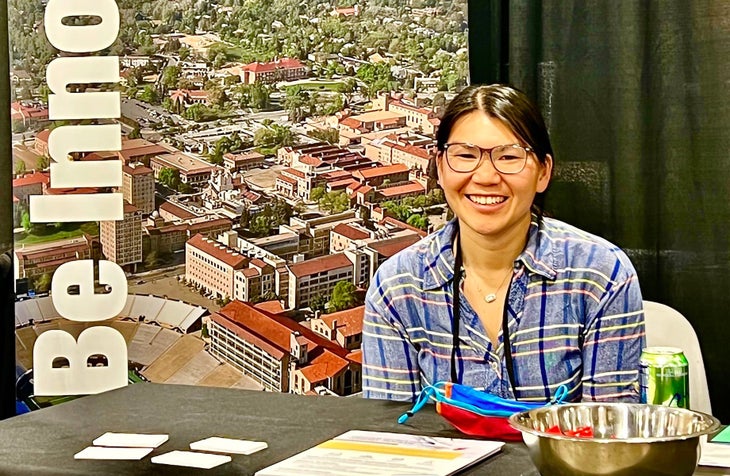
Fewer attendees means high-quality meetings: “You can feel that there’s a lot more space this time, but that means anybody here is going to have a meeting of high quality,” said Graham Stewart, founder of Duckworth. “The fact is, there’s more accessibility when it’s like this. There are all sorts of factors contributing to the show being quieter, but I know the meetings will be high quality, and I’m excited to be back in person. It makes a difference.”
A new gathering spot focused on inclusion: “As one of the few minority-owned companies in the industry, the Seirus booth has become a gathering place for different BIPOC groups,” said Wendy Carey, Seirus’ CFO. “We realized from a business perspective that the ROI was not going to be here at this show for us to bring staff and products. But we had already made a commitment to these groups to use our booth as a home base. We worked with OR and they very generously decorated the space and allowed us to make a new ‘Inclusion Home Base’ for these advocates and groups that have been doing so much work to make this industry more expansive, welcoming, and inclusive.”
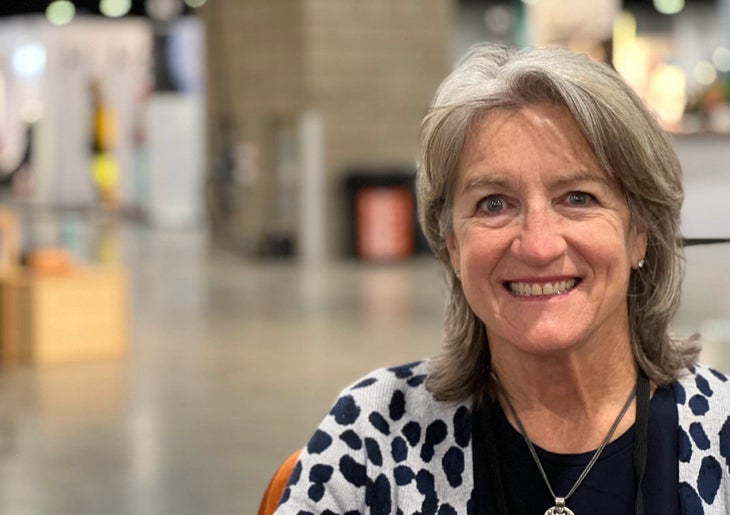
Lesson of the Day
Climate change is not a partisan issue; the key is finding common ground: Every perspective matters. That’s the takeaway from Snow Show’s opening Industry Breakfast featuring a panel of Protect Our Winters (POW) athletes and ambassadors (including Hilary Hutcheson, Josh Jespersen, and Peyton Thomas), plus legislators from both Colorado (state senator Faith Winter) and Utah (U.S. Senate candidate and former Utah state representative Becky Edwards.) Together, these voices represent democrats and republicans; rural and urban upbringings; military, science, and athletic careers; anglers, trail runners, and skiers; advocates and policy makers; and more. The common thread that ties their diverse backgrounds and experiences together? A reverence for the outdoors, and an appreciation for the stories that connect us from all corners of the industry.
As each panelist explained how climate solutions fit into their diverse niches and roles in the outdoor world, one thing became increasingly clear: no matter where you hail from or to what region you’re returning after these three days of togetherness, we are all grappling with climate change in our own ways, none more or less important than the rest. To move forward as an industry, we need to identify and nurture commonalities that help us build bridges to change.
“Climate change, and mitigating this problem, and making a C change for all of us makes all of us better,” said Edwards, who passed the first piece of legislation to acknowledge climate change from a red state. “It’s very different than a lot of conversations we have in politics. That abundance mentality, when you align with another group…that is something we should all get behind. When we see each other in silos, break down those silos and boxes. Bring everything you can to the table. The table is big. If there’s not a chair for you, bring your own chair and make your voice heard.”
